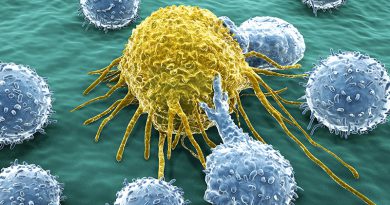Path to Healing
Published on June 28th, 2012 by Diana Duren.
by Jessica Pasley

Sierra Sekulich is one of medicine’s great victories. This fall all eyes will be on the 22-year-old – dressed in a bleached white gown, carrying a bouquet of white roses with a pinch of royal blue – as she walks down the aisle to her husband and the path to her future. It’s a far cry from the procession – a white casket adorned with pink carnations and white lilies – she told her mother she wanted about seven years ago just prior to a heart and double-lung transplant.
In 2005, Sekulich’s outlook was grim.
At age 15 her heart and lungs were failing.
With a rare and fatal lung disease and a congenital heart defect, Sierra’s only chance at survival required three healthy organs – a heart and two lungs.
“I remember my parents being told that they would have a better chance at winning the lottery than me getting a transplant,” said Sekulich. “It was the reality. Lungs and a heart are hard to come by. The biggest challenge was finding everything together.”
Heart-lung transplantation is rare primarily because of a shortage of donor organs. A single operation is required to simultaneously replace the heart and both lungs. Fewer than 40 heart-lung transplantations are performed each year in the United States, and about 100 worldwide, to help patients in cardiopulmonary failure.
After heart-lung transplantation, a patient’s one-year survival rate is about 70 percent, and a little more than 50 percent at three years.
Born with a congenital heart defect called Tetralogy of Fallot, a hole in her heart that was causing low oxygen levels
in the blood, Sekulich underwent a series of corrective surgeries in the first decade of her life.
In addition, she suffered from a rare disorder called primary pulmonary hypertension (PPH), now referred to as idiopathic pulmonary arterial hypertension. The disease’s cause is unknown. People with PPH have abnormally high blood pressure in the arteries of the lungs, which leads to the narrowing of blood vessels in the lungs, making the right side of the heart work harder than normal.
“You’d think the congenital heart disease repair would have been her only challenge in life,” said Thomas Doyle, M.D., her cardiologist prior to transplant. “But lo and behold, she was diagnosed with a rare and fatal lung problem and despite aggressive management, she was losing that battle.”
Sekulich’s first 15 years of life were spent in and out of the hospital, on oxygen, taking a bevy of medications and enduring multiple procedures. She had never known what it was to get up and go somewhere uninhibited.
Growing up, she was limited in her activities because of shortness of breath and a heart monitor. In school, a teacher’s aide always escorted her and carried her books.
“And I was never, ever alone. There was always someone with me. Even while I was in the hospital, it took nearly an army of people just to walk down the hall,” she said.
At age 10, she was the first pediatric patient at Vanderbilt to take a brand new pulmonary hypertension drug called Flolan. It was administered through a specialized pump, making daily tasks more taxing.
“It required a lot of attention,” she said. “Everything was scheduled all revolving around medications, my oxygen tank and my pump. It all required that I have a load of supplies with me at all times – I mean a large duffle-sized bag to carry it all.”

Sekulich spent three months at Children’s Hospital leading up to her transplant. Room 5305 in the Pediatric Critical Care Unit became her home. Her days were filled with craft projects from crocheting and knitting to embroidery and quilting. There was always music and singing coming from her room. She was most notorious for her pranks and her love of shooting small plastic darts.
On Nov. 7, 2005, she received a heart and lungs.
Her prayers were answered, though the road to freedom was not an easy one. Her new heart and lungs provided a new lease on life, but at 15 years old, Sekulich was very much like a toddler.
“I had to learn how to do everything again – walk, breathe, breathe while eating, write,” she rattled off. “It’s kind of hard to explain, but when I was really, really sick I was so short of breath that I had to stop breathing so that I could chew.
“At first I was scared that I wouldn’t get my transplant, but then once it happened I was scared that I wouldn’t be able to cope with it all,” she said pausing. “I really wanted to be normal like other kids, but I was so afraid I wouldn’t be able to pick up on things, that I wouldn’t fit in, that I wouldn’t know what to do or how to be a teenager – I spent most of life in hospitals.”
Although Sekulich missed out on many childhood activities like swimming, organized sports or even hanging out with friends at the mall, she is not sitting idle today.
She is busy planning her Nov. 3 wedding to Zac Winton.
The pair met a little over a year ago on Facebook. He was searching for other Tullahoma, Tenn., residents. She, a native of Tullahoma, now residing in Tracy City, was goofing off online.
They figured out their families knew each other. Online postings grew into face-to-face meetings, a serious relationship and finally a marriage proposal.
“For some reason we just kept talking,” said Winton. “The first night we ‘met’ we stayed up until the next morning chatting.”
Winton said he is feeling more secure in his role as caregiver now that he has some experience. Earlier in the year, Sekulich spent a few days in the hospital after experiencing chest pains.
“When I asked her parents for permission to marry me, they told me to be prepared for possible hospitalizations and other things,” said Winton. “I was scared when we were here (at Vanderbilt). But I knew I needed to understand what was going on and learn how to take care of her.”
Sekulich and Winton will marry at her grandmother’s church in Tracy City. With invitations finalized, dresses purchased, tuxedos picked out and music selections completed, Sekulich is busy working with her florist and writing her vows.
She plans to move back to Tullahoma with Winton after the wedding, which is going to be difficult for Anna Sekulich, Sierra’s mom. For most of her 22 years, Anna has been by her daughter’s side.
“This is definitely an adjustment for us,” said Anna of her daughter’s engagement. “I am so thankful that she has the chance to get married and lead as normal a life as possible for her.
“We really like Zac and we are so happy for her, but it’s hard to let her go. The simple fact that she is alive – I am very thankful for every single minute of it. We know it has been nothing short of a miracle that she is here.”
Doyle, who remains her favorite doctor, couldn’t be more pleased with his former patient’s outcome.
“She was a very unique patient,” recalled Doyle, Ann and Monroe Carell Jr. Family Associate Professor of Pediatric Cardiology. “And she is one of the great miracles of medicine.
I am thrilled for her and her chance to be able to grow into an adult. It is a blessing.”
Her pulmonologist Ivan Robbins, M.D., first met Sekulich 12 years ago when she began the Flolan treatment. His primary role began post-transplant. Every six months she returns to Vanderbilt for a host of medical tests to ensure her heart, lungs and other organs are functioning properly. Because of the immunosuppressant drug therapy Sekulich relies on for anti-rejection purposes, she is more susceptible to infections.
“She has really done amazingly well, with very few complications,” said Robbins, associate professor of Medicine, Allergy/ Pulmonary and Critical Care Medicine. “I would anticipate that she will continue to do well. She is able to do essentially anything she wants, which is what we hope to see from our transplant patients.
“Sierra’s outlook is excellent. She has a great quality of life and is able to do all the things she would normally do had she not had a transplant. Getting married is another testament to just how well she has done.”
Although most of Sekulich’s life has been dictated by her health, she is ready to focus on the future as a wife and homemaker. The couple has discussed the possibility of adoption once they settle into married life.
“I see something I want to do, I do it. I have somewhere I want to go, I go. I don’t have the same constraints. What a huge difference,” she said.
As she walks down the aisle toward her future husband, the couple’s favorite song, “God Bless the Broken Road” by Rascal Flatts will be playing. She hopes she will be able to stay composed as she sings the lyrics in her head.
“There have been times [since transplant] when I literally stop what I am doing and I think – a couple of years ago I couldn’t do any of this. I just cry and I thank God for where I am today.”


